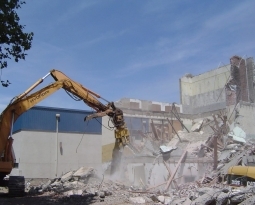3 Kings Environmental: Is There a Heating Oil Tank Buried Somewhere on Your Property?
Before natural gas and electricity were widely available, most homes in the United States were heated by oil furnaces. These furnaces burned a petroleum product very similar to diesel fuel. In fact in many markets, heating oil and on-road diesel are interchangeable. As you might imagine, oil furnaces are generally less-efficient and less sustainable than more modern heating systems. So as time went by and technology advanced, many homeowners stopped using their oil furnaces and replaced them with more modern gas or electrical options. However, the remnants of these old heating systems still remain in many homes.
What are Heating Oil Tanks?
Because older homes weren’t connected to a central source of heating oil the way modern homes are connected to electrical or natural gas mains, homeowners had to store reserve oil supplies onsite. As a result, most older homes featured a heating oil tank (HOT) located in the basement or buried somewhere on the property.
In many cases, these tanks weren’t removed at the time of conversion. And after a property has changed hands a couple times, it’s not uncommon for buried tanks to be entirely forgotten. That is, until they pop back up at inopportune times.
What are the Risks of HOTs?
Most underground HOTs were made of bare steel, and as a result, they tend to degrade when left unattended. And when HOTs degrade, they can leak petrochemicals into the soil which risks contaminating groundwater.
Even empty indoor HOTs pose an environmental risk. Many older HOTs are filled with leftover sludge, which is a potentially hazardous material. Indoor HOTs also tend to be less reliable than underground HOTs. As a result, they can also corrode and leak, and in turn, contaminate and indoor area.
HOTs Can Impact Property Transactions
Property owners often aren’t aware of buried HOTs until they’re discovered during an inspection process as part of a sale. When these HOTs are discovered, the sale often grinds to a halt because the potential new owner doesn’t want to take responsibility for any potential environmental mitigation. That leaves the seller scrambling to remove or decommission the newly-discovered HOT before they complete their desired sale.
Below-ground inspections aren’t always required as part of a property transaction. So it’s also not uncommon for new buyers to unwittingly purchase a property which includes one or more unknown buried HOTs. At some point these tanks are discovered and must be dealt with.
How Do I Remove or Decommission a HOT?
When faced with the prospect of removing or decommissioning a HOT, homeowners would be wise to hire an experienced contractor to perform the work. Many state and local jurisdictions have strict procedures that must be followed for a HOT to be considered truly decommissioned. In addition, many purchase and sale agreements require decommissioning work to be performed by licensed, bonded, and insured contractors.
If you’re removing or decommissioning a HOT somewhere in the northwest, 3 Kings Environmental can help. We maintain a division dedicated to providing complete inspection, assessment, and decommissioning services of heating oil tanks. To learn more, call us at 360.666.KING (5464) or you can contact us by email at [email protected].









